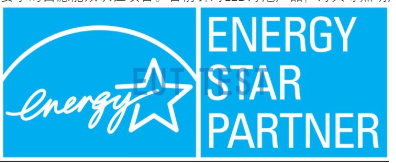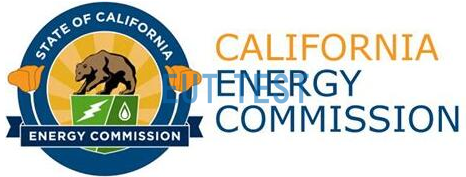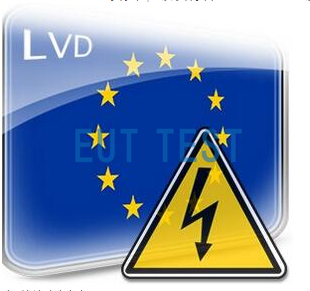Our country has a large number of LED production R & D manufacturing plants, every year there are millions of LED lamp beads or finished lamps and lanterns exported into the European Union, the United States, Canada, etc., exports to the North American market, LED lamps and lanterns products also need to comply with U.S. regulatory requirements for electrical safety, electromagnetic compatibility, energy efficiency, and chemical testing requirements; however, these requirements and the European Union directive requirements there are different degrees of difference:
Access certification requirements for LED luminaires - Electrical safety test description:
The U.S. Department of Labor under the Occupational Safety and Health Administration (OSHA) requires that products used in the workplace must be tested by the U.S. Nationally Recognized Testing Laboratory (NRTL) and issued to ensure the user's personal safety, so most electrical products into the U.S. market must be in line with the NRTL logo, and the OSHA that is, the authorized international certification body as the NRTL certification body in accordance with the products of the applicable standards for testing and certification; for the Canadian market or imported into Canada electrical products must be verified, the test must be completed by the Standards Council of Canada (SCC) accredited laboratories. Applicable standards for testing and certification; for the Canadian market, electrical products sold in Canada or imported into Canada must be verified, the test must be completed by the Standards Council of Canada (SCC) accredited laboratories.
North American luminaire standards differ significantly from the EU IEC, and North American electrical safety testing does not require consideration of EMF requirements. North American luminaire standards generally define the scope of the standard according to the purpose of the installation and the place of use.
For example: fixed installation of ceiling lights, recessed ceiling lights and other applicable standards are ANSI/UL 1598 and CAN/CSA C22.2 No. 250.0, such as these lamps and lanterns are used LED light source, the certification of the need to take into account additional ANSI/UL 8750 and CSA C22.2 No. 250.13; LED lamps and lanterns such as built-in electronic power supply, in addition to passing the lamps and lanterns series of standard tests, the built-in electronic power supply circuit must also meet the requirements of UL1310 or UL8750. Power supply, in addition to the lamp series standard test, the built-in electronic power supply circuit must also comply with the requirements of UL1310 or UL8750.
Entry Certification Requirements for LED Luminaires - Energy Efficiency Test Requirements in Different Countries
The United States for obtaining Energy Star Energy Star certification or DLC certification, CEC voluntary bulb certification of lighting products also provide varying degrees of financial subsidies and rebates; the United States of America's current energy efficiency testing of LED bulbs and fixtures is mainly focused on the LED lamps and lanterns of Energy Star and DLC, Lighting Facts Label, CEC Title 20 , CEC Title24 JA8-2016, DOE U.S. federal minimum energy efficiency requirements.
1, ENERGYSTAR energy efficiency certification

ENERGYSTAR symbol for energy efficiency
The ENERGY STAR logo was created by the U.S. Environmental Protection Agency (EPA) to ensure that the energy efficiency of listed products meets the regulatory requirements of the voluntary energy efficiency certification program. It is currently available for LED bulbs, lamps and other lighting products.
2、Lighting Facts label energy efficiency certification
Lighting Facts Label energy-efficiency certification is the U.S. Department of Energy (DOE) announced the implementation of the voluntary energy-efficiency labeling program, currently only for LED lighting products, which was launched with the intention of "Give them the Facts", is to allow lighting products to achieve more specific data and credibility of higher requirements, from five aspects of the disclosure of the product's true performance parameters: lumens lm, initial luminous efficiency lm/W, input power W, relevant color temperature CCT, color rendering index CRI. The project applies to LED luminaires and fixtures in the following product ranges: AC mains or DC-powered complete luminaires, low-voltage 12V AC or DC fixtures, LED fixtures with separable power supplies, and linear or modular products. The project is applicable to
3. DLC's energy efficiency certification
The full name of DLC is "The Design Lights Consortium". A voluntary energy efficiency certification program sponsored by the Northeast Energy Efficiency Partnerships (NEEP), the DLC Certified Product Catalog is used to promote high-performance LED luminaires across the United States that are not yet covered by the ENERGYSTAR standard. "The DLC catalog is used to promote high-performance LED luminaires throughout the United States that are not already covered by the ENERGYSTAR standard. The current DLC technical requirements for lighting products mainly focus on outdoor commercial and industrial buildings with LED lamps and lanterns, such as outdoor wall sconces, garage lights, industrial and mining lamps, outdoor LED lamps and lanterns and LED tubes and other lighting products. Its main performance requirements for products: total luminous flux, ring band luminous flux, luminous efficacy, color temperature, color rendering index, luminous flux maintenance rate, power factor, harmonic distortion.
4. FTC Energy Efficiency Label Pasting Requirements
According to the U.S. Federal Trade Commission FTC decree requirements, LED lights into the U.S. market sales need to be in the box and the light body labeled with the energy label, to disclose to the public the product's annual power consumption, life expectancy, etc., FTC energy labeling and the above Lighting Facts Label label is similar to the FTC energy labeling is a mandatory requirement. For more details, see FTC energy guide label requirement regulation: 16CFR305.
5、California Energy Efficiency CEC Requirements

California Energy Efficiency CEC Requirements
In order to improve the efficiency of electrical products, the United States California Energy Commission (California Energy Commission) on December 30, 2005, the legal implementation of the appliance efficiency regulations CEC Title 20-Appliance Efficiency Regulation. a total of more than 20 types of products into the product In total, there are more than 20 types of products into the United States California must comply with the energy efficiency and efficiency of the regulatory requirements. There is also the CEC Title 24-Building Efficiency Regulation, JA8-2016, which specifically addresses the strobe test method JA10-2016, which was released and adopted. CEC Title 20 and CEC Title 24 are mandatory California energy efficiency certifications. CEC Title 20, CEC Title 24 are mandatory California Energy Efficiency Certifications, and a voluntary CEC Light Bulb V3.0 has just been released and is in effect.
6、Canada Energy Efficiency Test Requirements
For lamps and lanterns products, the current Canadian mandatory energy efficiency requirements NRCan already control the general fluorescent lamps, general incandescent reflector lamps, general lamp products, but currently there is no mandatory energy efficiency requirements for LED light source lamps and lanterns products.
7、FCC/ICES test requirements
FCC is the U.S. federal law of the radio harassment of teletext products (EMI) characteristics of the limit value of mandatory certification, but does not cover the EMS (radio immunity) test requirements; LED lamps and lanterns of the FCC certification test and the European Union CE in the electromagnetic compatibility of the EMC certification test has a big difference.
FCC certification is divided into Verification of Conformity (VoC), Declaration of Conformity (DoC) and Certification (FCC ID) three modes, the use of which certification method, depending on the type of product, such as LED panel light products FCC testing standards for the FCC 47 CFR part 15B, certification type: VoC. Note that the FCC certification of LED lamps and lanterns is divided into Class A (LED lamps and lanterns used in industrial and commercial environments) and Class B (LED lamps and lanterns used in residential environments) two categories, the test limits of the two categories are not the same at all, the CE certification of the radio harassment test limits of the standard is only one kind of limit values Similar to Class B in FCC, there is one more 9k-30MHz EMF radiation test.
Canada has also established mandatory electromagnetic compatibility requirements for electrical products, referred to as ICES, is Industry Canada (Industry Canada) a mandatory certification, the standard for LED light products is ICES-005, the requirements are basically the same as the FCCpart15B, but the radiation test is extended to 1000MHz. from December 1, 2016 onwards, ICES-005 Issue4 is officially implemented. ICES-005 Issue4 is officially enforced.
8、EU regulatory requirements
In Europe, due to the policy of banning the sale of incandescent lamps, the demand for LED lighting fixtures is expected to increase gradually. In addition, a variety of areas including automotive, outdoor and decorative applications, as well as the use of LED lighting fixtures in the indoor demand will also surge, to comply with the EU regulatory access requirements has become the challenge of Chinese manufacturers to face.
According to the decree of the European Commission, lamps and similar products sold in Europe must be labeled with CE marking, then the products need to be marked with CE marking, must comply with the European Union on the lamps and lanterns of the product's electrical safety, EMC, chemical substances, energy consumption, as well as energy-efficiency labeling and other directives such as the following requirements:
8.1. Electrical safety tests
The Low Voltage Directive (LVD) establishes overall safety requirements for all low-voltage products entering the European Union. Semiconductor lighting products belong to the low-voltage products defined in the LVD, and therefore must also comply with the specifications of the LVD. They comply with the relevant safety standards EN 62560, EN 62031, EN61347-1/61347-2-13, EN 60598-1/60598-2 series, as well as with IEC/TR 62778 and IEC/ EN 62471 for blue light radiation hazard and photobiological radiation safety.

Low Voltage Directive (LVD) Symbols
8.2, EMC electromagnetic compatibility testing
According to the EU Directive 2014/30/EU requirements, EMC electromagnetic compatibility testing includes two aspects: electromagnetic interference (EMI) and electromagnetic tolerance (EMS), the former is mainly manifested in the conductive and radiated interference, while the latter is mainly to consider the product on such as electrostatic discharge, radiation, pulse swarms, surges, the ability to tolerate the conductive interference, i.e., interference resistance test. The main test standards are: EN55015; EN61547; andEN61000-3-2Power supply harmonics requirements, EN61000-3-3 power supply flicker requirements.
IEC 61000-3-2 2018 Harmonic Testing Standard Update Latest Edition: updated November 2024
8.3 ERP Directives
For LED light products, the ERP Directive stipulates that LED lights and control devices need to meet the following requirements:
Energy consumption requirements: maximum energy efficiency index EEI of the luminaire; no-load power, standby power, and load efficiency of the control unit.
LED lamp function test requirements: 6000h lamp survival rate and lumen maintenance rate; failure before switching times; start time; 95% lumen rise time; premature failure rate; color rendering index; color tolerance (color consistency of the requirements); power factor PF. But the current EU ERP does not have a requirement for the LED flicker frequency; product information marking as well as energy-efficiency labeling requirements: labeling Luminous flux, nominal life, color temperature and so on. Please refer to the implementation rules (EU NO.1194/2012; NO.874/2012) for detailed requirements and limits.
8.4, Rohs, Reach, WEEE Directive
LED lighting products to meet the above electrical safety, EMC, ERP, chemical Rosh, Reach and WEEE electronic end-of-life recycling directive requirements can be hit on the CE mark, in addition to LED bulbs and lamps also need to be in accordance with the energy labeling, in accordance with the measured energy consumption data on the energy labeling.
concluding remarks
In LED product testing, in addition to the common electrical, energy efficiency, electromagnetic compatibility testing and other mandatory requirements, regardless of the European Union or North American market, more and more buyers attach importance to LED lighting products, some voluntary certification and performance testing, such as the European market recognized GS certificate, the United States DLC (Design Lights Consortium), Lighting Facts Label, etc. In addition, the special optical characteristics of certain LED products are also increasingly being valued by buyers, such as strobe verification, spectral measurement, color consistency, and color rendering index CRI, LED aging test, energy conversion efficiency, full luminous flux, viewing angle range and other performance requirements. Therefore, in the face of increasingly fierce competition in the European and American markets, in addition to complying with the mandatory certification tests, additional performance often makes it easier to stand out in a large number of similar products.
